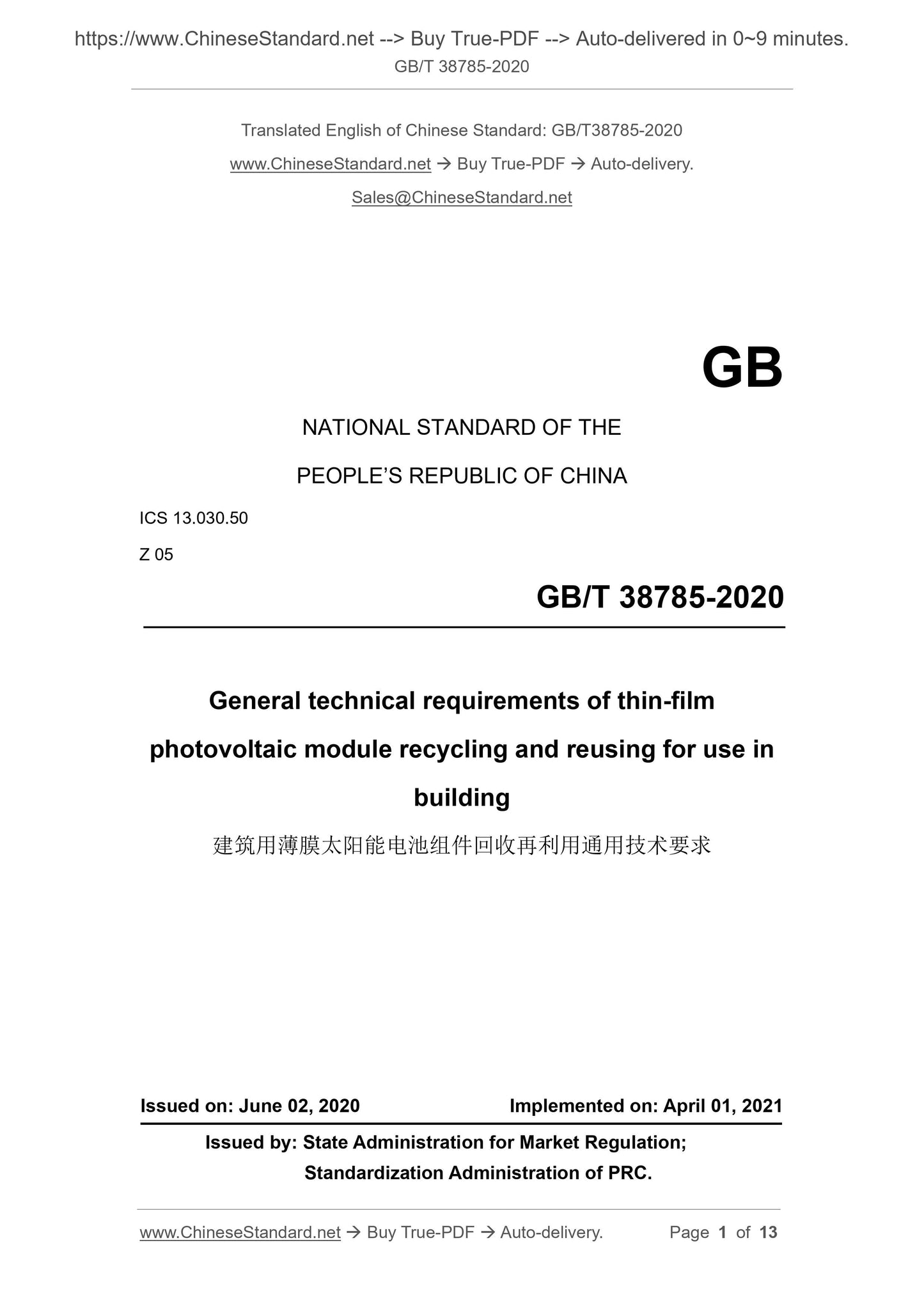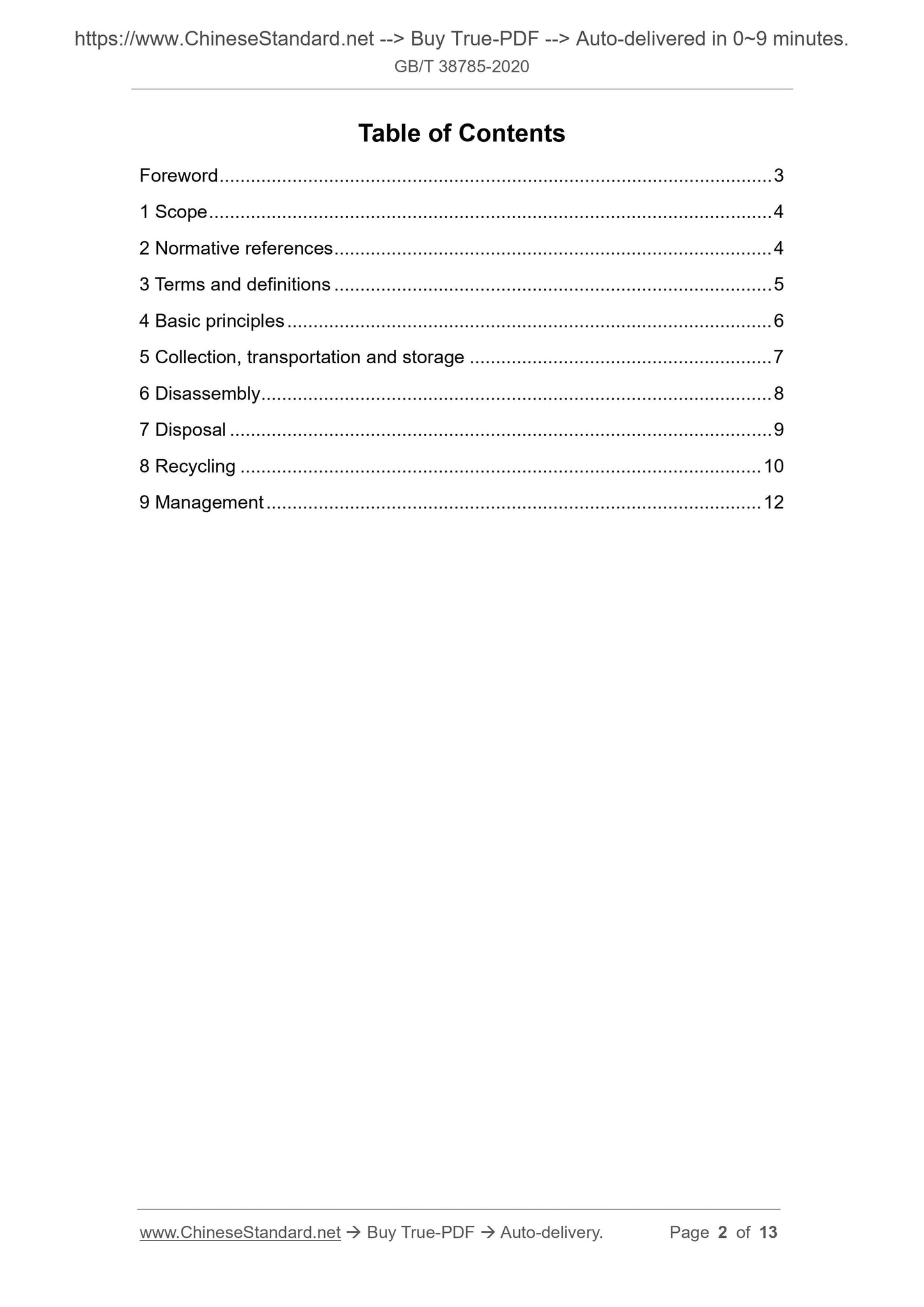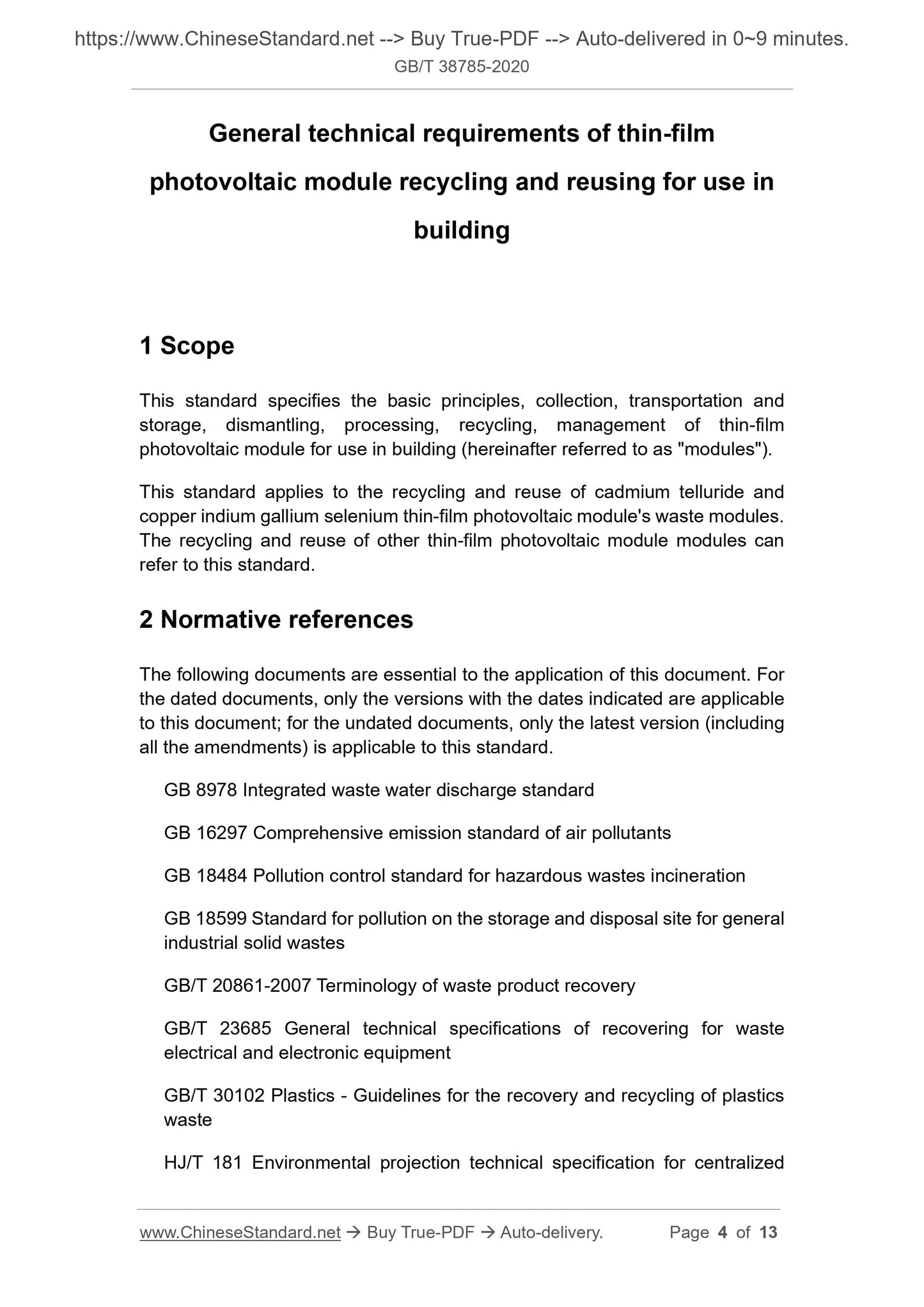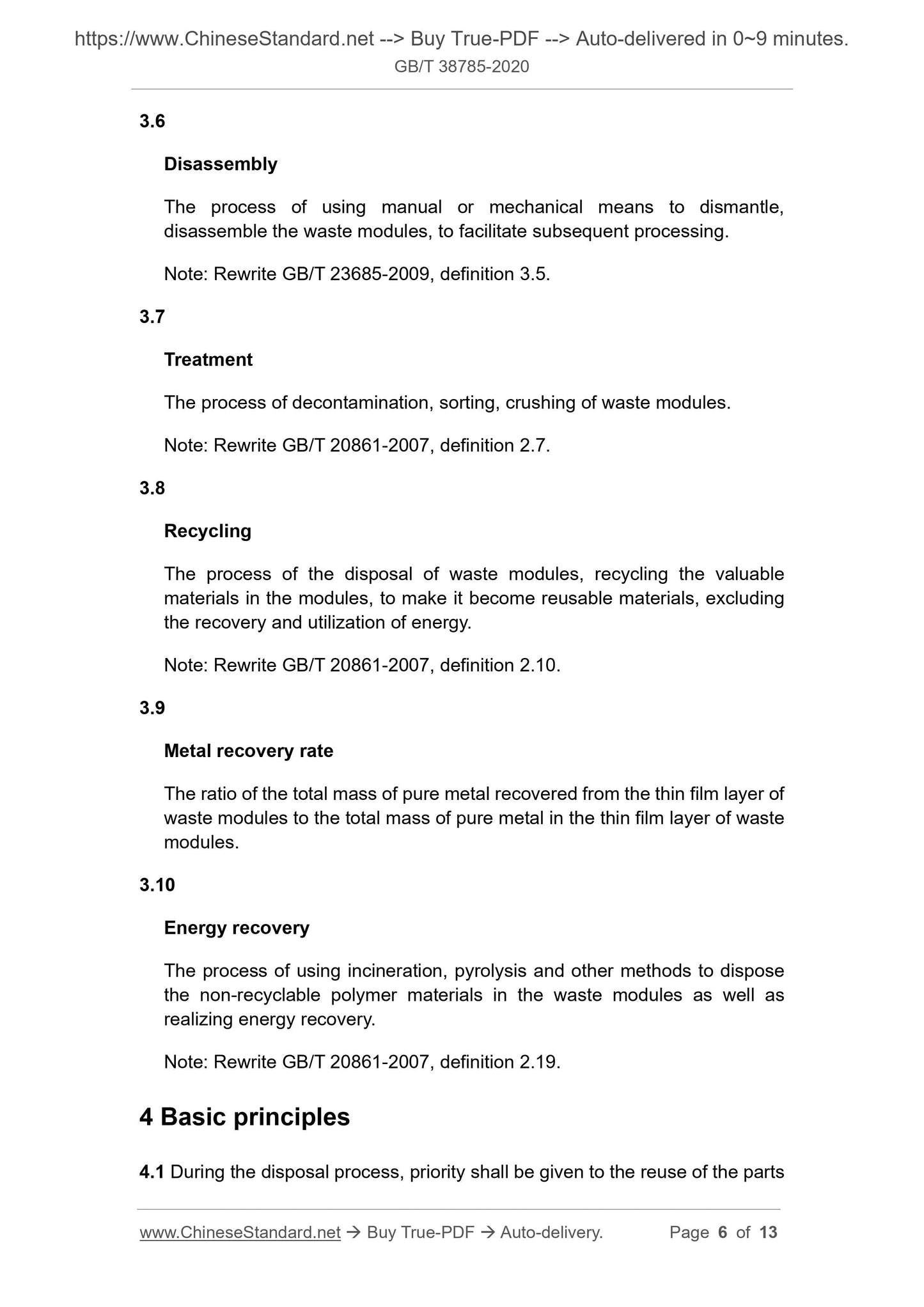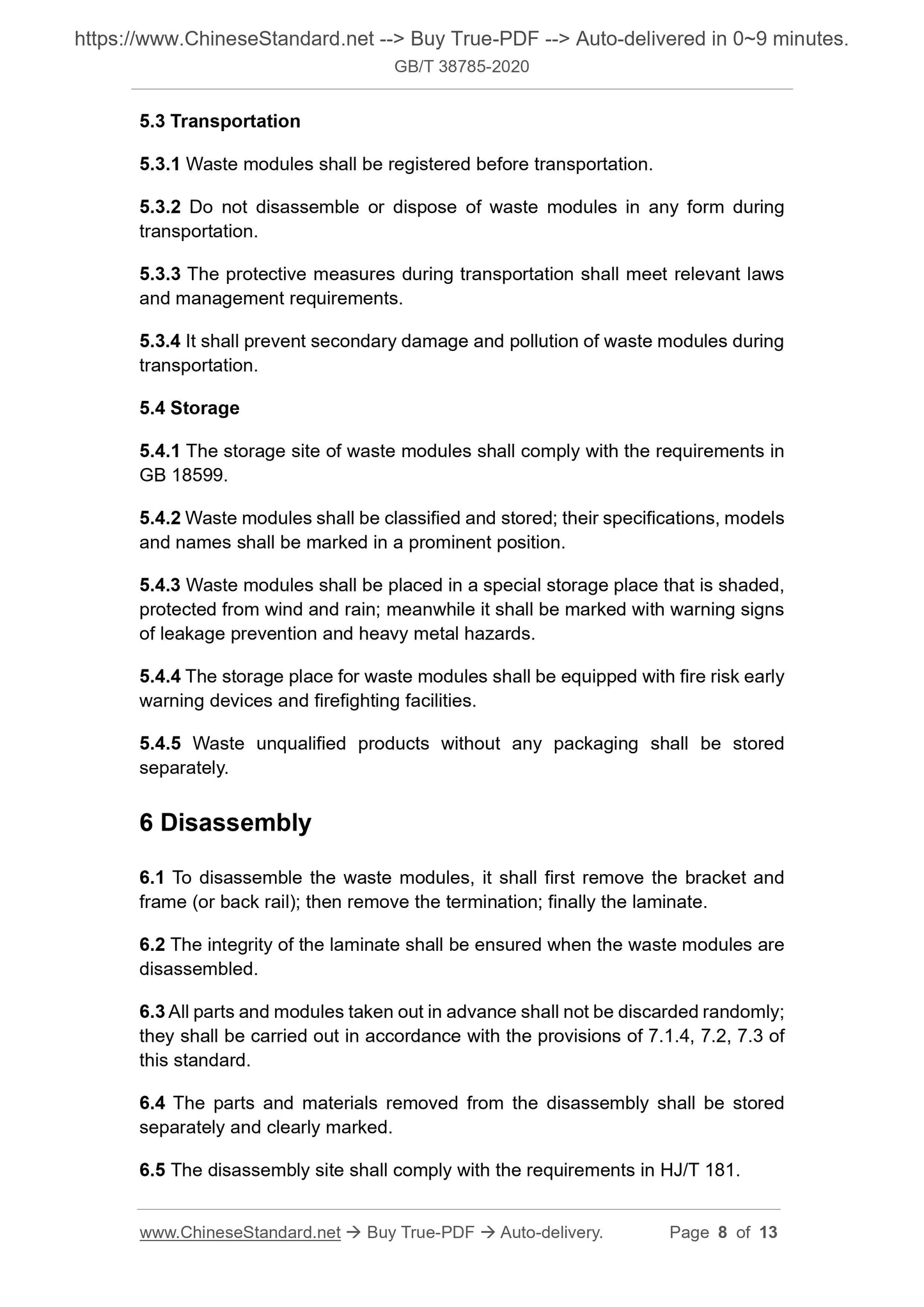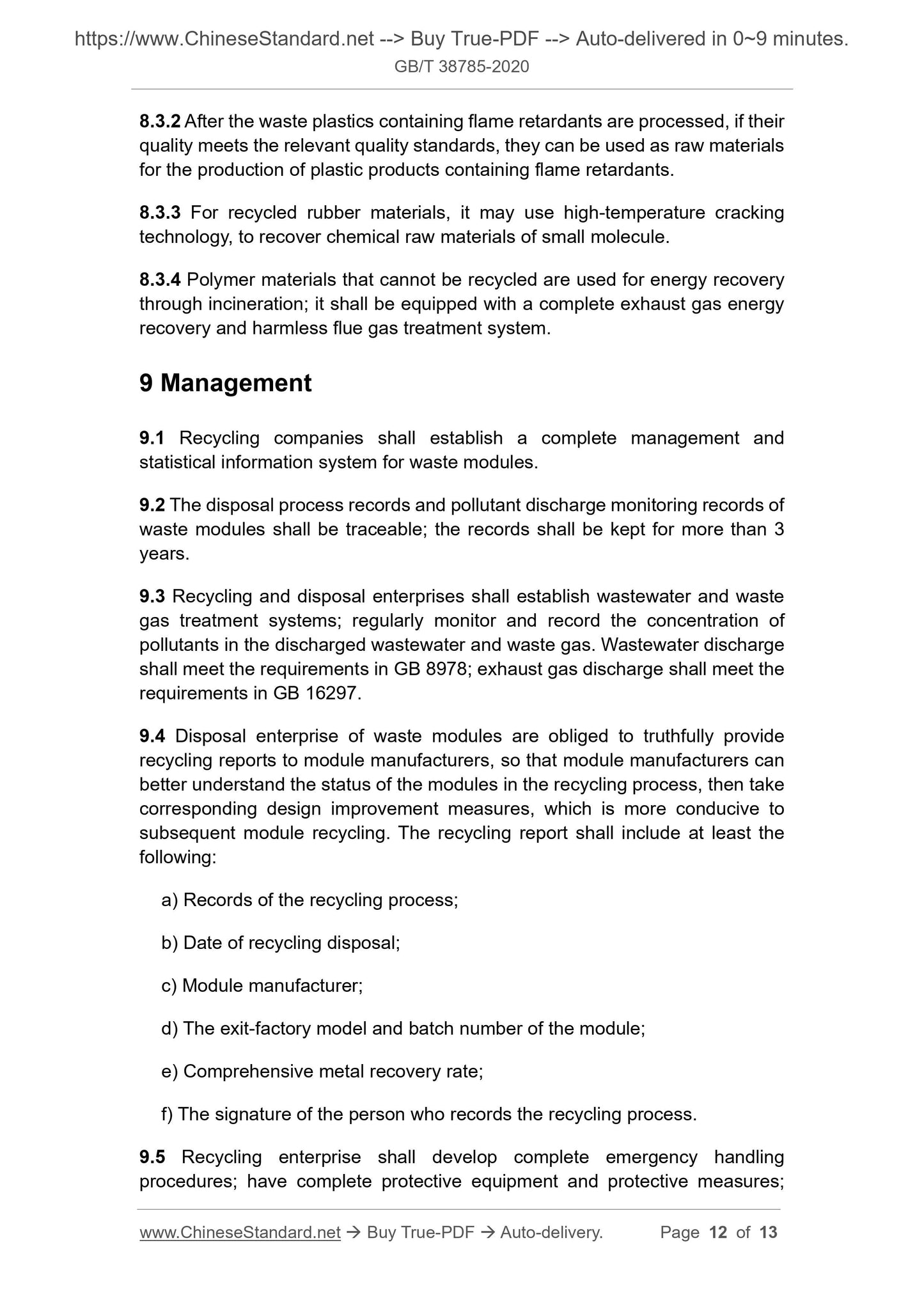1
/
of
7
www.ChineseStandard.us -- Field Test Asia Pte. Ltd.
GB/T 38785-2020 English PDF (GB/T38785-2020)
GB/T 38785-2020 English PDF (GB/T38785-2020)
Regular price
$110.00
Regular price
Sale price
$110.00
Unit price
/
per
Shipping calculated at checkout.
Couldn't load pickup availability
GB/T 38785-2020: General technical requirements of thin-film photovoltaic module recycling and reusing for use in building
Delivery: 9 seconds. Download (and Email) true-PDF + Invoice.Get Quotation: Click GB/T 38785-2020 (Self-service in 1-minute)
Newer / historical versions: GB/T 38785-2020
Preview True-PDF
Scope
This standard specifies the basic principles, collection, transportation andstorage, dismantling, processing, recycling, management of thin-film
photovoltaic module for use in building (hereinafter referred to as "modules").
This standard applies to the recycling and reuse of cadmium telluride and
copper indium gallium selenium thin-film photovoltaic module's waste modules.
The recycling and reuse of other thin-film photovoltaic module modules can
refer to this standard.
Basic Data
| Standard ID | GB/T 38785-2020 (GB/T38785-2020) |
| Description (Translated English) | General technical requirements of thin-film photovoltaic module recycling and reusing for use in building |
| Sector / Industry | National Standard (Recommended) |
| Classification of Chinese Standard | Z05 |
| Classification of International Standard | 13.030.50 |
| Word Count Estimation | 10,142 |
| Date of Issue | 2020-06-02 |
| Date of Implementation | 2021-04-01 |
| Issuing agency(ies) | State Administration for Market Regulation, China National Standardization Administration |
Share
